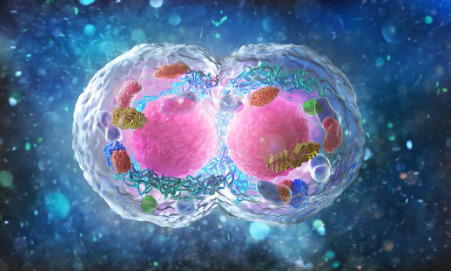Table of Contents
The marvels of life’s reproduction and growth hinge on the intricate processes of cell division. Two fundamental mechanisms, mitosis, and meiosis, serve distinct roles in generating new cells. This article embarks on a journey to unravel the distinctions between these processes and their significance in the realm of biology.

What is Mitosis?
The Process of Mitosis
Mitosis is a cell division process crucial for growth, tissue repair, and asexual reproduction. It results in two genetically identical daughter cells, each with the same number of chromosomes as the parent cell.
Stages of Mitosis
Mitosis unfolds through distinct stages:
- Prophase: Chromosomes condense, the nuclear envelope disintegrates, and spindle fibers form.
- Metaphase: Chromosomes align at the cell’s equatorial plane.
- Anaphase: Sister chromatids separate and move towards opposite poles.
- Telophase: Chromatids reach the poles, and new nuclear envelopes form around them.
- Cytokinesis: The cell divides, resulting in two daughter cells.
What is Meiosis?
The Process of Meiosis
Meiosis is a specialized cell division process that generates gametes (sperm and egg cells) for sexual reproduction. It involves two sequential divisions and reduces the chromosome number by half, resulting in genetically diverse offspring.
Stages of Meiosis
Meiosis occurs in two successive phases:
Meiosis I
- Prophase I: Homologous chromosomes pair up in a process called synapsis, and crossing-over occurs.
- Metaphase I: Homologous pairs align along the cell’s equatorial plane.
- Anaphase I: Homologous chromosomes separate and move to opposite poles.
- Telophase I: Chromosomes reach the poles, and cytokinesis occurs.
Meiosis II
Similar to mitosis but with half the chromosome number, this division results in four non-identical haploid daughter cells.
A Comparative Analysis: Mitosis vs. Meiosis
| Aspect | Mitosis | Meiosis |
| Purpose | Growth, tissue repair, asexual reproduction | Sexual reproduction |
| Daughter Cells | Two genetically identical diploid cells | Four non-identical haploid cells |
| Chromosome Number | Same as parent cell (diploid) | Half of parent cell (haploid) |
| Genetic Variation | Limited genetic diversity among offspring | Increases genetic diversity among offspring |
| Synapsis and Crossing-Over | No synapsis or crossing-over | Synapsis and crossing-over occur during Prophase I |
| Role in Evolution | Maintains genetic stability | Drives genetic diversity and evolution |
| Examples | Somatic cell division | Gamete formation in animals and spore formation in plants |
Frequently Asked Questions on Mitosis vs. Meiosis
What is the main purpose of mitosis?
Mitosis primarily serves for growth, tissue repair, and asexual reproduction.
Why is meiosis important for sexual reproduction?
Meiosis reduces the chromosome number by half and generates genetically diverse gametes, which are essential for genetic variation in offspring.
What is synapsis and when does it occur?
Synapsis is the pairing of homologous chromosomes during Prophase I of meiosis, allowing for crossing-over and genetic exchange.
How do mitosis and meiosis contribute to genetic diversity?
While mitosis maintains genetic stability, meiosis generates genetic diversity through crossing-over and independent assortment of chromosomes.
Can you provide examples of where mitosis and meiosis occur in the body?
Mitosis occurs in somatic cells for growth and repair. Meiosis occurs in germ cells (sperm and eggs) for sexual reproduction.





